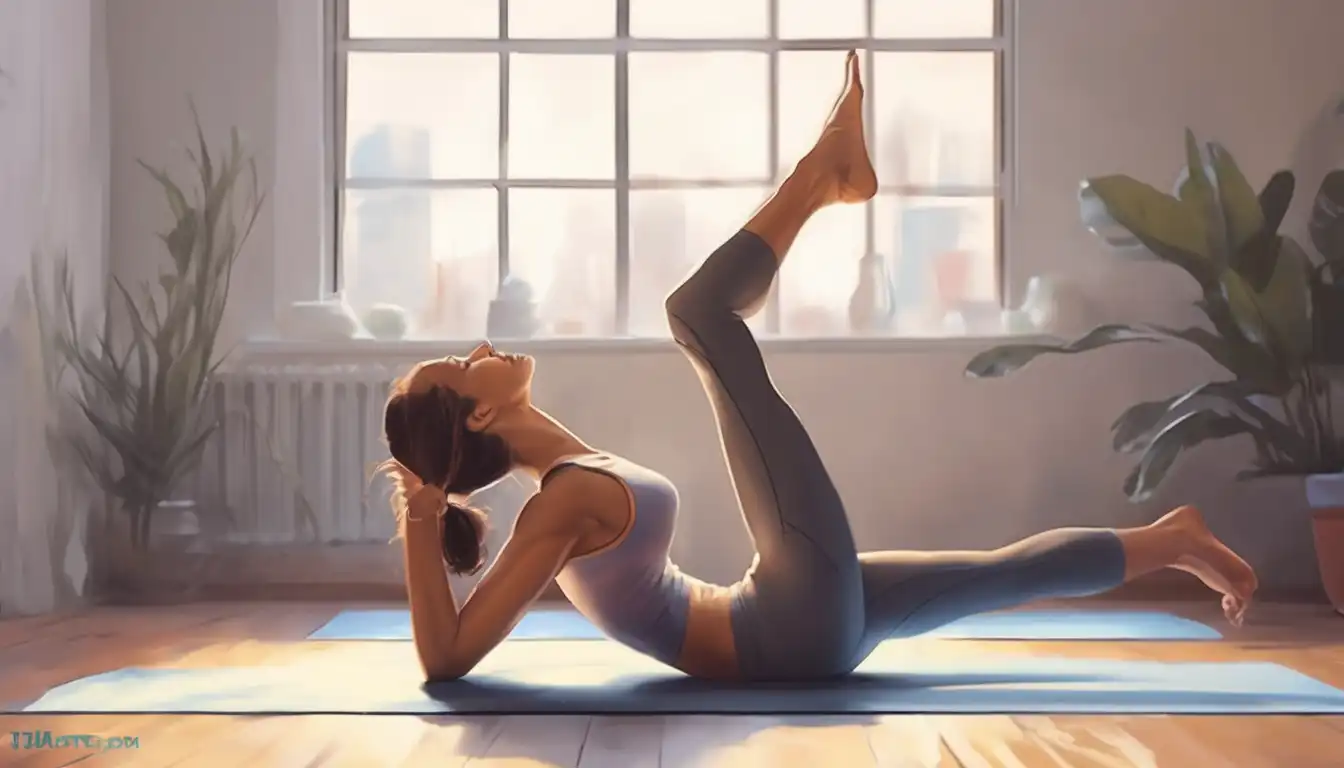Unlock Your Body's Potential: Essential Stretches for Better Flexibility and Deep Relaxation
In today's fast-paced world, maintaining flexibility and finding moments of relaxation are more important than ever. Whether you're an athlete looking to improve performance or someone seeking relief from daily stress, incorporating the right stretches into your routine can transform your physical and mental well-being. This comprehensive guide covers the most effective stretches that target major muscle groups while promoting deep relaxation.
Why Flexibility and Relaxation Matter
Flexibility isn't just for gymnasts and dancers—it's crucial for everyone. Improved flexibility enhances your range of motion, reduces injury risk, alleviates muscle tension, and promotes better posture. When combined with relaxation techniques, stretching becomes a powerful tool for stress reduction and mental clarity. Regular stretching can help combat the negative effects of sedentary lifestyles and high-stress environments.
Full Body Stretching Routine
Neck and Shoulder Release
Begin with gentle neck stretches to release tension accumulated from hours at a desk or looking at screens. Slowly tilt your head toward each shoulder, holding for 15-30 seconds. Follow with shoulder rolls, moving them in circular motions to loosen tight muscles. These simple movements can significantly reduce headaches and improve blood flow to the brain.
Cat-Cow Stretch for Spinal Mobility
This yoga-inspired stretch is excellent for spinal flexibility and relaxation. Start on hands and knees, alternating between arching your back upward (cat position) and dipping it downward (cow position). Move slowly with your breath, inhaling as you move into cow pose and exhaling into cat pose. Repeat 10-15 times to awaken your spine and release back tension.
Forward Fold for Hamstring Flexibility
Stand with feet hip-width apart and slowly fold forward, reaching toward your toes. Keep a slight bend in your knees if needed. This stretch targets your hamstrings, calves, and lower back—areas that often become tight from sitting. Hold for 30 seconds, breathing deeply to enhance the relaxation response.
Quadriceps Stretch for Balanced Leg Flexibility
Standing or lying on your side, gently pull one heel toward your glutes while keeping knees together. This stretch is essential for counteracting the effects of prolonged sitting and maintaining balanced leg flexibility. Hold for 20-30 seconds per side, focusing on steady breathing.
Child's Pose for Ultimate Relaxation
Kneel on the floor, sit back on your heels, and fold forward with arms extended. This restorative pose stretches your back, hips, and shoulders while promoting deep relaxation. Remain in this position for 1-2 minutes, allowing your body to surrender to gravity and your mind to quiet.
Advanced Stretches for Greater Flexibility
Pigeon Pose for Hip Opening
This deep hip stretch is transformative for flexibility. From hands and knees, bring one knee forward toward the same-side wrist, extending the opposite leg back. Slowly lower yourself down, feeling the stretch in your hip flexors and glutes. Hold for 30-60 seconds per side, breathing through any discomfort.
Butterfly Stretch for Inner Thighs
Sit with soles of your feet together, knees falling outward. Gently press your knees toward the floor while keeping your back straight. This stretch improves flexibility in your groin and inner thighs—areas crucial for overall mobility. For deeper relaxation, fold forward while maintaining the butterfly position.
Breathing Techniques to Enhance Your Stretching
Proper breathing is the secret weapon for maximizing both flexibility and relaxation. Practice diaphragmatic breathing by inhaling deeply through your nose, allowing your belly to expand, and exhaling slowly through your mouth. Coordinate your breath with your stretches—exhaling as you deepen into each position. This oxygenates your muscles and activates the parasympathetic nervous system, promoting relaxation.
When and How Often to Stretch
For optimal results, incorporate stretching into your daily routine. Morning stretches can awaken your body, while evening sessions help release the day's tension. Aim for at least 10-15 minutes of stretching most days. Remember that consistency is more important than intensity—gentle, regular stretching yields better long-term results than occasional intense sessions.
Safety Tips for Effective Stretching
Always warm up with light movement before stretching cold muscles. Never bounce or force stretches—move slowly and mindfully. Listen to your body and distinguish between good stretching sensation and pain. If you have existing injuries or medical conditions, consult with a healthcare professional before beginning any new stretching regimen. For more guidance on safe exercise practices, explore our fitness safety guide.
Combining Stretching with Other Wellness Practices
Enhance your flexibility and relaxation journey by combining stretching with other wellness activities. Consider incorporating meditation techniques into your routine or pairing stretching with light cardio exercises. Many people find that practicing stretching after a warm bath or using foam rollers amplifies the benefits. Discover more about creating a holistic wellness routine in our holistic health guide.
Tracking Your Flexibility Progress
Monitor your flexibility improvements by noting how your stretches feel over time. You might find that you can reach further, hold positions longer, or experience less resistance. Keeping a simple journal can help you stay motivated and recognize your progress. Remember that flexibility gains happen gradually—celebrate small victories along the way.
Conclusion: Embrace the Journey to Flexibility and Relaxation
Incorporating these stretches into your life can lead to remarkable improvements in both physical flexibility and mental relaxation. Start with the basic stretches and gradually incorporate more advanced positions as your flexibility increases. The journey to improved flexibility is personal and rewarding—each stretch brings you closer to a more comfortable, relaxed, and mobile body. For additional resources on maintaining an active lifestyle, check out our fitness motivation tips.
Remember that the benefits extend beyond physical flexibility—regular stretching practice cultivates mindfulness, reduces stress, and enhances overall quality of life. Whether you have five minutes or thirty, making stretching a consistent part of your routine is one of the most valuable investments you can make in your long-term health and well-being.
